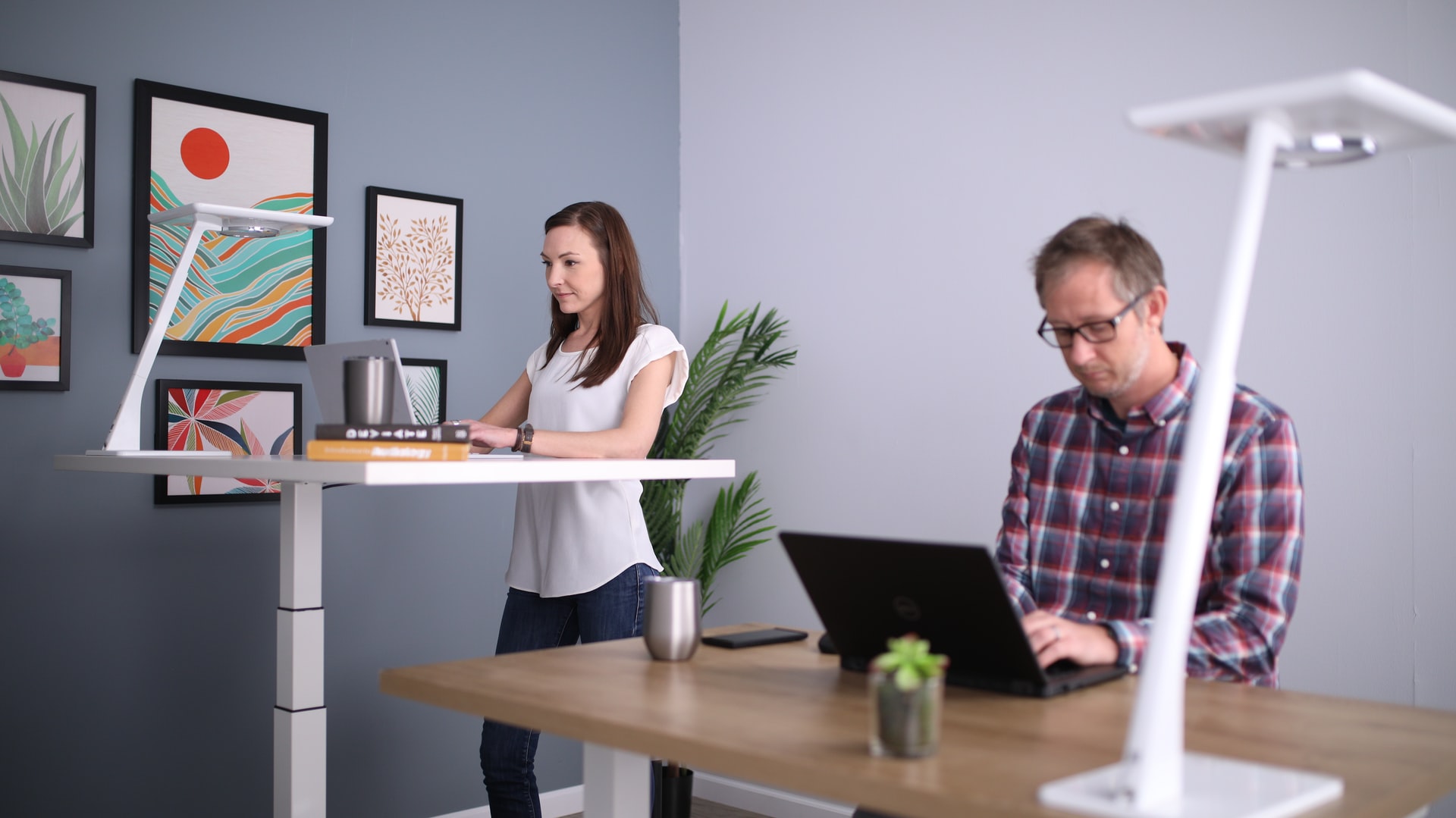One of the most popular trends in today’s work environment is the standing desk. A standing desk is a type of desk that allows a person to stand up comfortably while working. There are many health benefits associated with using a standing desk, including improved posture, increased calorie burning, reduced back pain and improved circulation. On the other hand, standing for too long has its downsides that can include fatigue, discomfort and an increased risk of varicose veins. So what’s the ideal sitting to standing ratio for office work? Should you be sitting on an ergonomic chair for the whole day? Let’s find out.
The healthiest sit to stand ratio
A recent study published in the International Journal of Environmental Research and Public Health found that the ideal ratio of sitting to standing at work is 2:1. In other words, for every two hours spent sitting, workers should stand for one hour. The study’s authors used a sample of office workers and found that those who followed the 2:1 ratio had the lowest levels of back pain, muscle tension, and fatigue. Some argue that standing for longer periods of time than the 2:1 ratio may be more beneficial. However, standing for long periods of time can also lead to problems such as varicose veins, back pain, and swollen feet. To avoid these issues, the American Heart Association(AHA) recommends taking a break from standing every 30 minutes to sit or walk for at least 2 minutes. It is important to find a balance that works for you and helps you stay comfortable and productive throughout the workday.
Many people who transition from sitting all day to standing find the transition quite challenging. They struggle to find a balance between standing and sitting and end up in situations in which they sit for most of the day. But can they be blamed? According to the American Heart Association, the average worker sits for about 7.7 hours per day and stands for 1.6 hours. To make the transition smoother is recommended to start gradually, by standing for no longer than 2 hours per day in the first week. Gradually increase to three hours the second week, four hours the third week, and continue until you reach a ratio that feels right for you. It’s very important to listen to your body when transitioning to standing, if after two hours of standing you need to sit down, do so!
Best practices to find the perfect sitting to standing ratio for you
The perfect sitting to standing ratio for an office job depends on the individual and the type of work they are doing. Some people may need to sit more to focus on their work, while others may find that they are more productive when they stand. The best way to find the perfect ratio for your individual needs is to experiment and see what works best for you. There are a few tips that can help you determine what’s the best ratio for you.
Firstly, it is important to understand that there is no single perfect sitting to standing ratio that is suitable for everyone. Instead, the ideal ratio will vary depending on the type of work you do, your personal preferences, and your health. For example, if you have a sedentary job, you may need to stand up more often than someone with a more active job.
Secondly, start gradually and take regular breaks to move around and stretch, even if this means standing up for just a few minutes every hour or so. It’s very important to listen to your body, make sure you are not feeling any pain or discomfort, if you feel like sitting just do it!
Thirdly, make sure you are standing correctly. Your standing desk should be at a comfortable height for you to work at, with your hands, wrists, and forearms straight and parallel to the floor. Your monitor should also be at eye level to avoid any neck strain. It’s also important to have a cushioned mat or wear shoes with insoles to reduce pressure on your feet and legs.
Lastly, when you are sitting at your desk, it is important to maintain good posture in order to avoid strain on the hips, back and neck. The feet should be flat on the floor or on a footrest and the knees should be bent at a 90 degree angle. The monitor should be at eye level and the keyboard and mouse should be within a comfortable reach that doesn’t require the shoulders to be hunched or the arms to be held at an awkward angle.
Ultimately, beating the drawbacks of a sedentary lifestyle and finding the perfect sitting to standing ratio is all about switching up your working position during the day and finding ways to implement movement into your routine.





